Abstract
The results of a survey of dermatophyte infection in New-foundland for the period 1962 to 1968 are presented. A steady annual rise in the number of specimen submissions is noted, with positive findings in an average of 21.7%. The contribution by source of specimens is recorded, and species distribution indicates that Microsporum canis has behaved in epidemic form whereas other species appear endemic. Trichophyton rubrum infection shows a steady annual increase. No cases of favus have been noted. The distribution of species by anatomical site is indicated.
Full text
PDF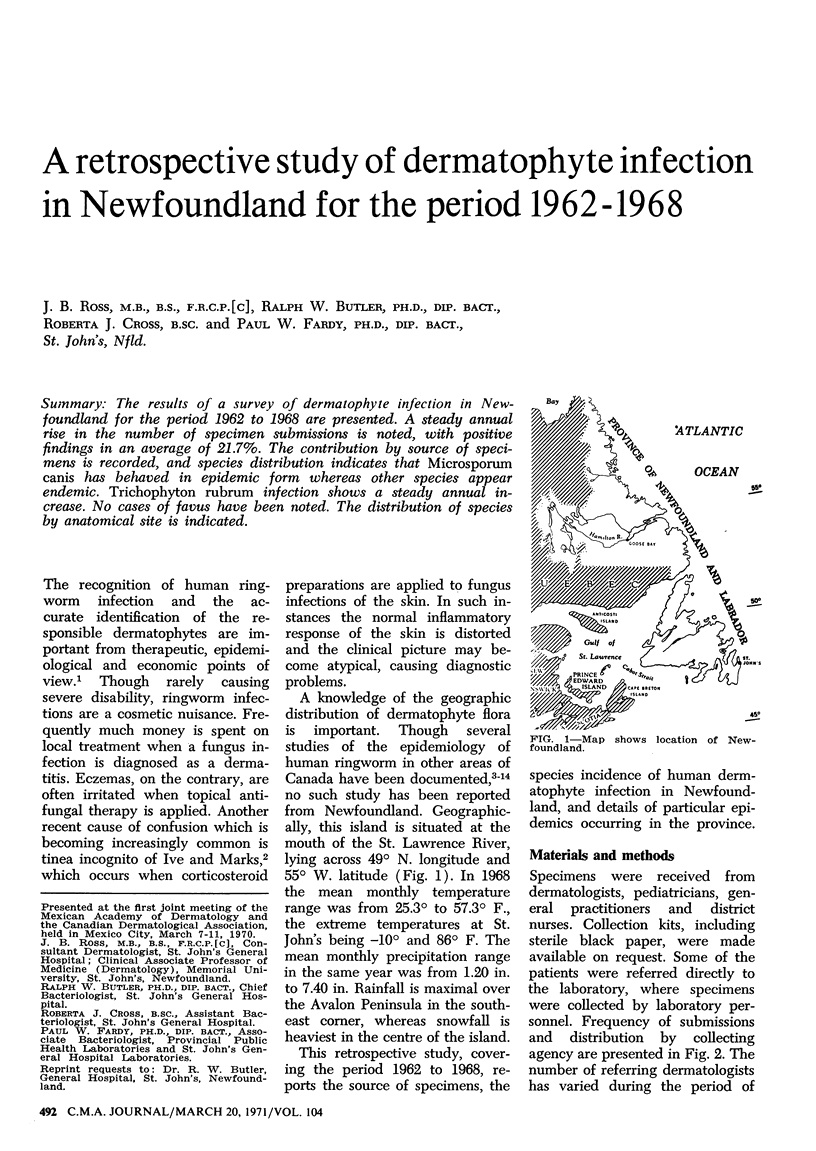
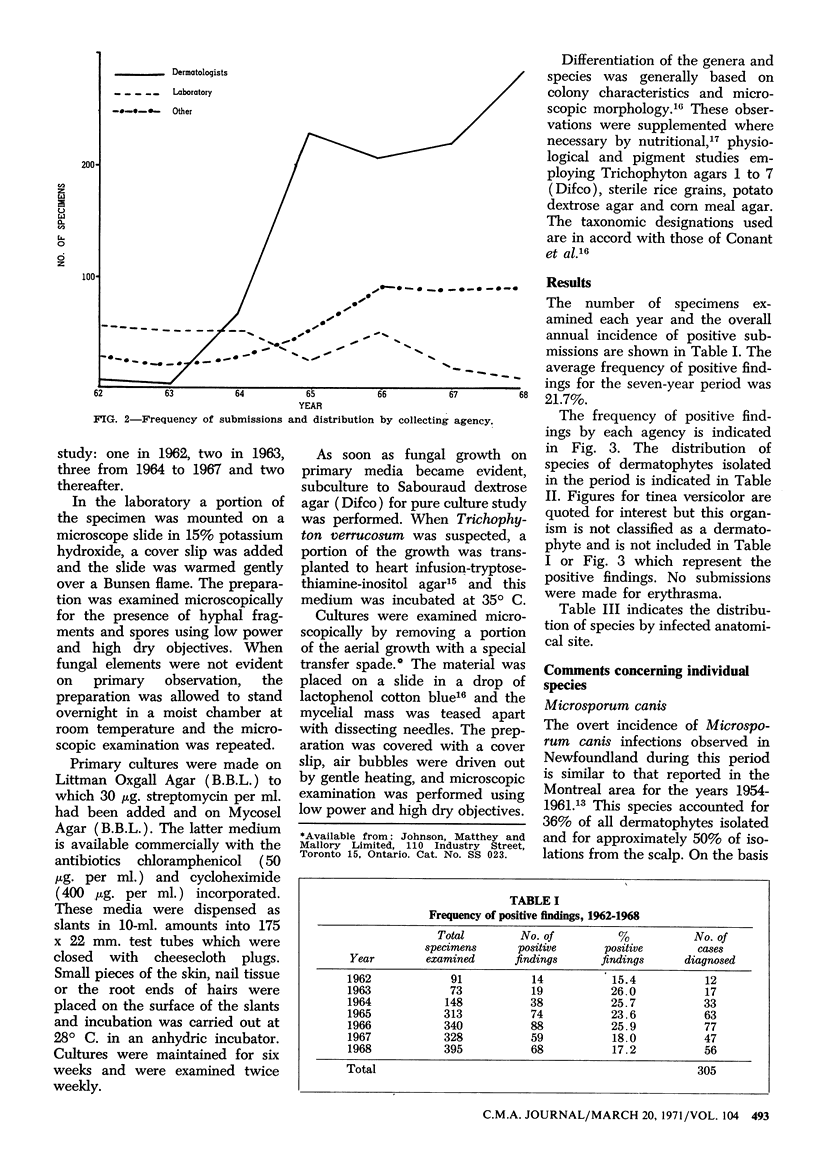
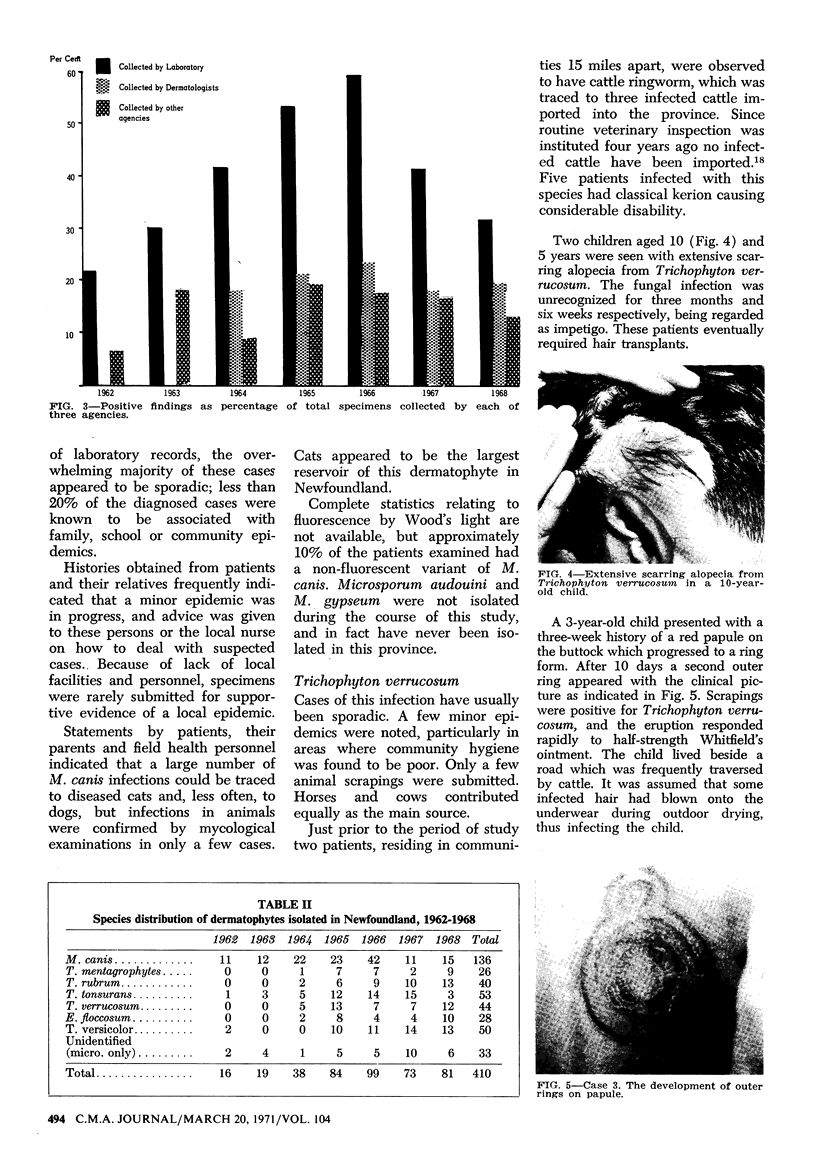
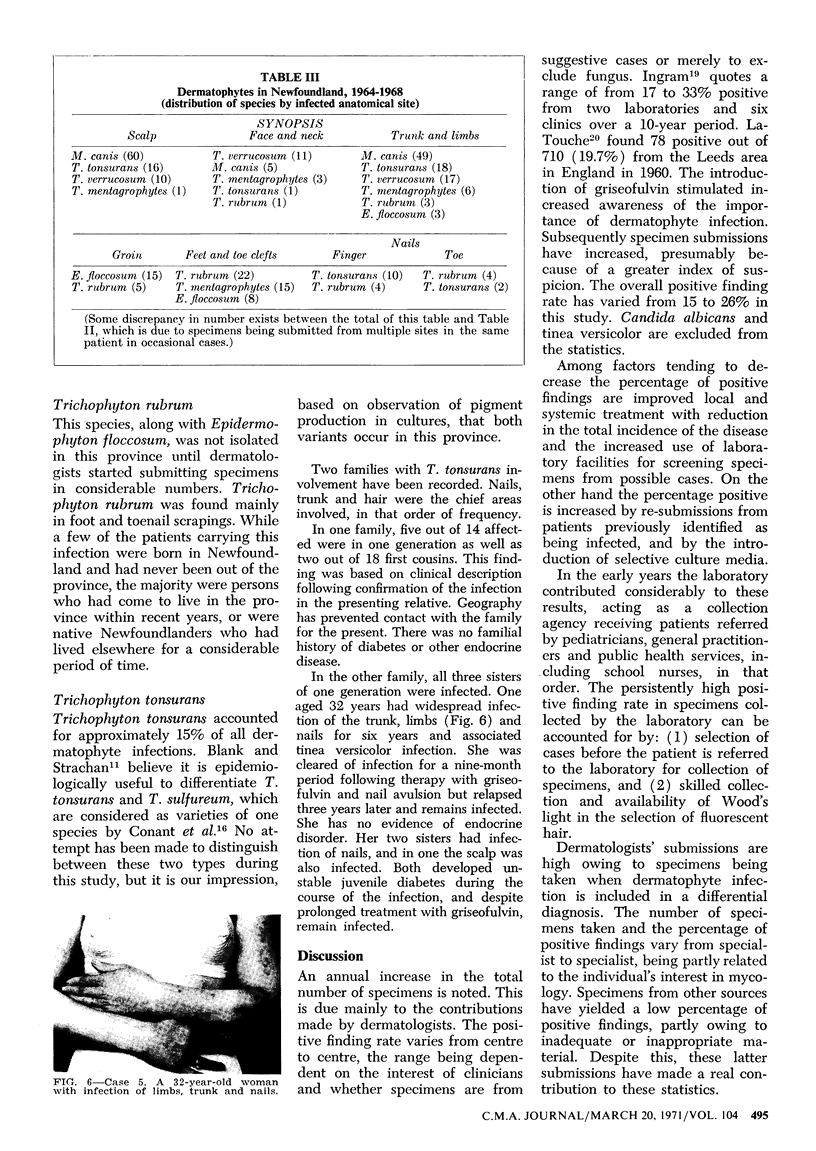
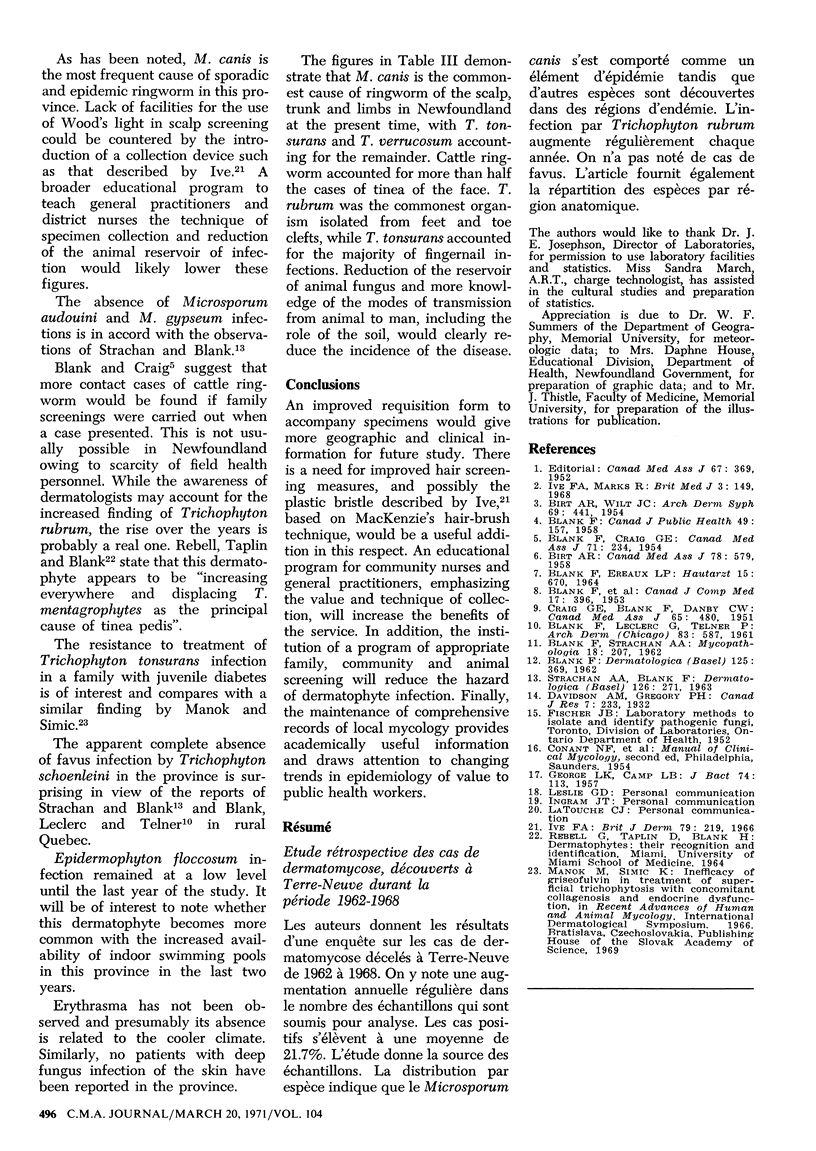
Images in this article
Selected References
These references are in PubMed. This may not be the complete list of references from this article.
- BIRT A. R. An outbreak of tinea capitis and tinea corporis due to Microsporum lanosum. Can Med Assoc J. 1958 Apr 15;78(8):579–583. [PMC free article] [PubMed] [Google Scholar]
- BIRT A. R., WILT J. C. Mycology, bacteriology, and histopathology of suppurative ringworm. AMA Arch Derm Syphilol. 1954 Apr;69(4):441–448. doi: 10.1001/archderm.1954.01540160043008. [DOI] [PubMed] [Google Scholar]
- BLANK F., CRAIG G. E. Family epidemics of ringworm contracted from cattle. Can Med Assoc J. 1954 Sep;71(3):234–235. [PMC free article] [PubMed] [Google Scholar]
- BLANK F., EREAUX L. P. DIE DERMATOPHYTENFLORA DER PROVINZ QUEBEC. Hautarzt. 1964 Dec;15:670–673. [PubMed] [Google Scholar]
- BLANK F. Endothrix ringworm endemic in rural eastern Quebec. Can J Public Health. 1958 Apr;49(4):157–159. [PubMed] [Google Scholar]
- BLANK F. Human favus in Quebec. Dermatologica. 1962;125:369–381. doi: 10.1159/000255011. [DOI] [PubMed] [Google Scholar]
- BLANK F., STRACHAN A. A. Infections due to Trichophyton tonsurans and Trichophyton sulfureum in rural eastern Quebec. Mycopathol Mycol Appl. 1962 Nov 10;18:207–212. doi: 10.1007/BF02051593. [DOI] [PubMed] [Google Scholar]
- CRAIG G. E., BLANK F., DANBY C. W. E. Tinea capitis due to species of the genus trichophyton. Can Med Assoc J. 1951 Nov;65(5):480–481. [PMC free article] [PubMed] [Google Scholar]
- GEORG L. K., CAMP L. B. Routine nutritional tests for the identification of dermatophytes. J Bacteriol. 1957 Aug;74(2):113–121. doi: 10.1128/jb.74.2.113-121.1957. [DOI] [PMC free article] [PubMed] [Google Scholar]
- Ive F. A., Marks R. Tinea incognito. Br Med J. 1968 Jul 20;3(5611):149–152. doi: 10.1136/bmj.3.5611.149. [DOI] [PMC free article] [PubMed] [Google Scholar]
- STRACHAN A. A., BLANK F. On 1117 microsporum canis infections in Montreal (1954-1961). Dermatologica. 1963;126:271–290. [PubMed] [Google Scholar]





